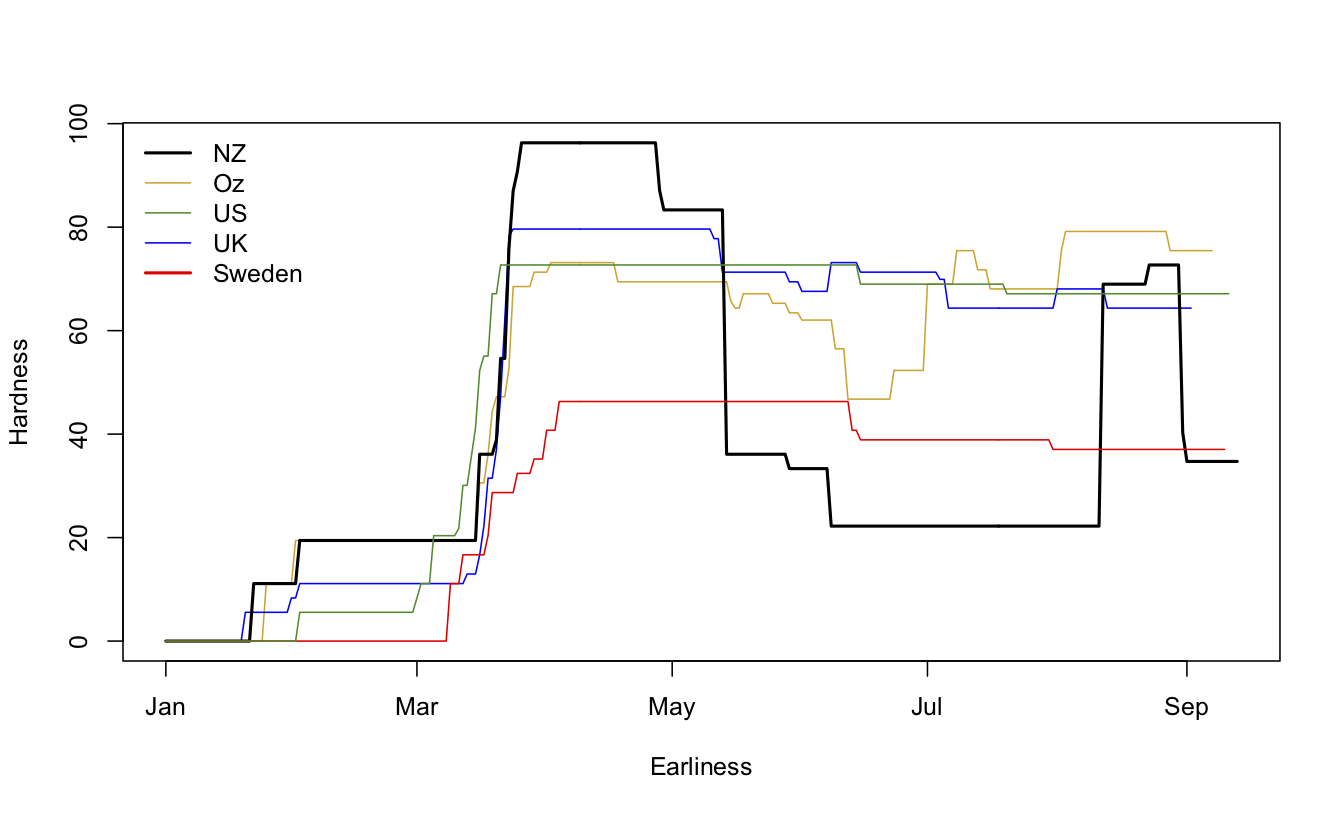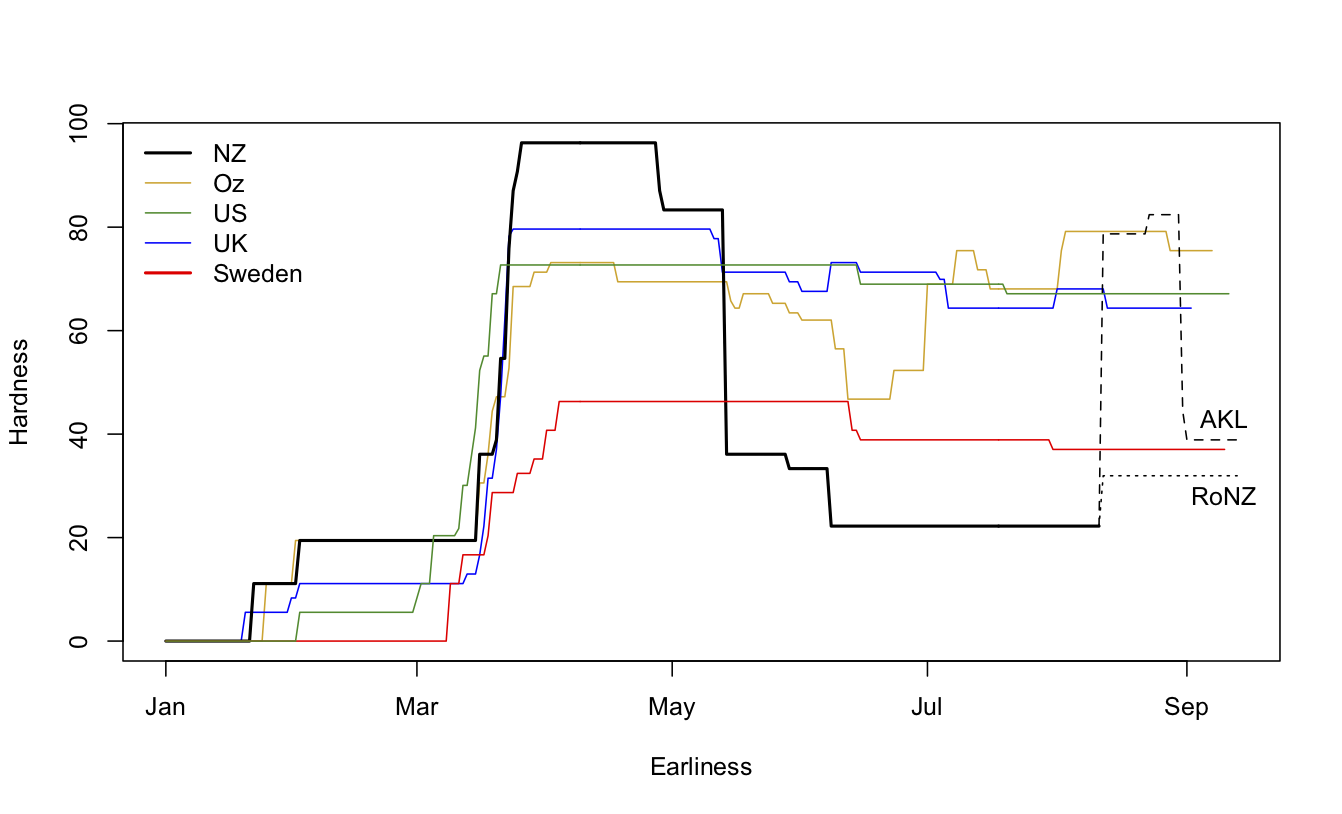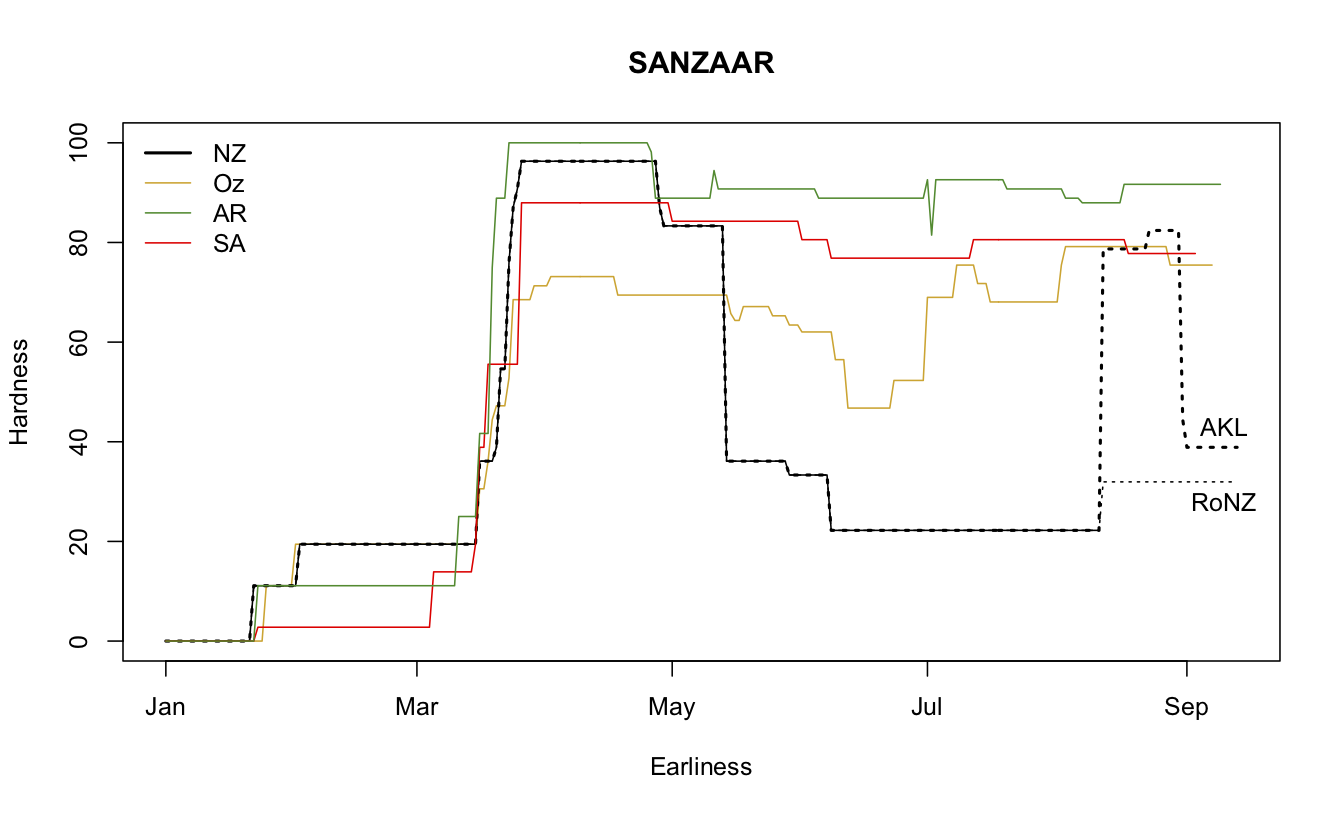NRL Predictions for Finals Week 1
Team Ratings for Finals Week 1
The basic method is described on my Department home page.
Here are the team ratings prior to this week’s games, along with the ratings at the start of the season.
| Current Rating | Rating at Season Start | Difference | |
|---|---|---|---|
| Storm | 13.50 | 12.73 | 0.80 |
| Roosters | 10.89 | 12.25 | -1.40 |
| Panthers | 8.92 | -0.13 | 9.10 |
| Raiders | 6.96 | 7.06 | -0.10 |
| Rabbitohs | 6.41 | 2.85 | 3.60 |
| Eels | 2.38 | 2.80 | -0.40 |
| Sharks | -0.56 | 1.81 | -2.40 |
| Knights | -1.82 | -5.92 | 4.10 |
| Warriors | -1.84 | -5.17 | 3.30 |
| Wests Tigers | -3.07 | -0.18 | -2.90 |
| Sea Eagles | -4.77 | 1.05 | -5.80 |
| Dragons | -4.95 | -6.14 | 1.20 |
| Titans | -7.22 | -12.99 | 5.80 |
| Bulldogs | -7.62 | -2.52 | -5.10 |
| Cowboys | -8.05 | -3.95 | -4.10 |
| Broncos | -11.16 | -5.53 | -5.60 |
Performance So Far
So far there have been 160 matches played, 109 of which were correctly predicted, a success rate of 68.1%.
Here are the predictions for last week’s games.
| Game | Date | Score | Prediction | Correct | |
|---|---|---|---|---|---|
| 1 | Broncos vs. Cowboys | Sep 24 | 32 – 16 | -2.90 | FALSE |
| 2 | Titans vs. Knights | Sep 25 | 36 – 6 | -6.40 | FALSE |
| 3 | Rabbitohs vs. Roosters | Sep 25 | 60 – 8 | -6.70 | FALSE |
| 4 | Bulldogs vs. Panthers | Sep 26 | 0 – 42 | -12.00 | TRUE |
| 5 | Sharks vs. Raiders | Sep 26 | 28 – 38 | -4.80 | TRUE |
| 6 | Wests Tigers vs. Eels | Sep 26 | 24 – 28 | -5.80 | TRUE |
| 7 | Sea Eagles vs. Warriors | Sep 27 | 28 – 40 | 3.10 | FALSE |
| 8 | Dragons vs. Storm | Sep 27 | 30 – 22 | -18.80 | FALSE |
Predictions for Finals Week 1
Here are the predictions for Finals Week 1. The prediction is my estimated expected points difference with a positive margin being a win to the home team, and a negative margin a win to the away team.
| Game | Date | Winner | Prediction | |
|---|---|---|---|---|
| 1 | Panthers vs. Roosters | Oct 02 | Panthers | 0.00 |
| 2 | Raiders vs. Sharks | Oct 03 | Raiders | 9.50 |
| 3 | Storm vs. Eels | Oct 03 | Storm | 11.10 |
| 4 | Rabbitohs vs. Knights | Oct 04 | Rabbitohs | 10.20 |


